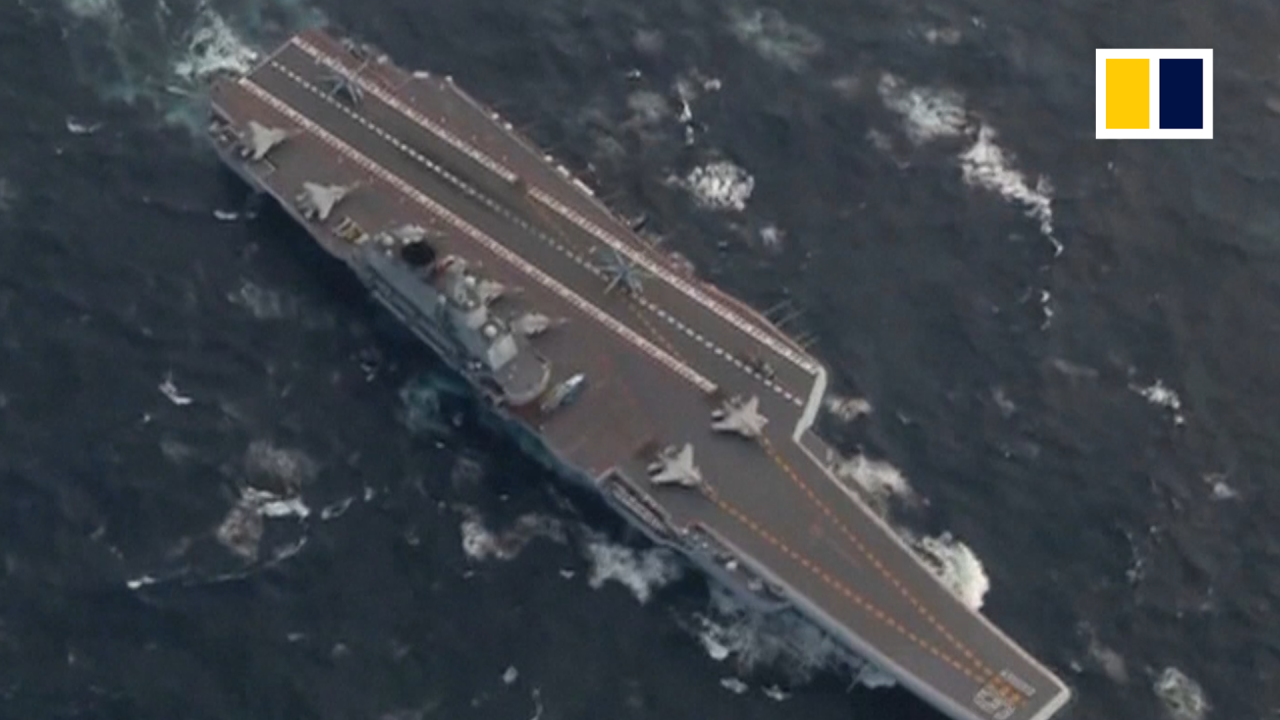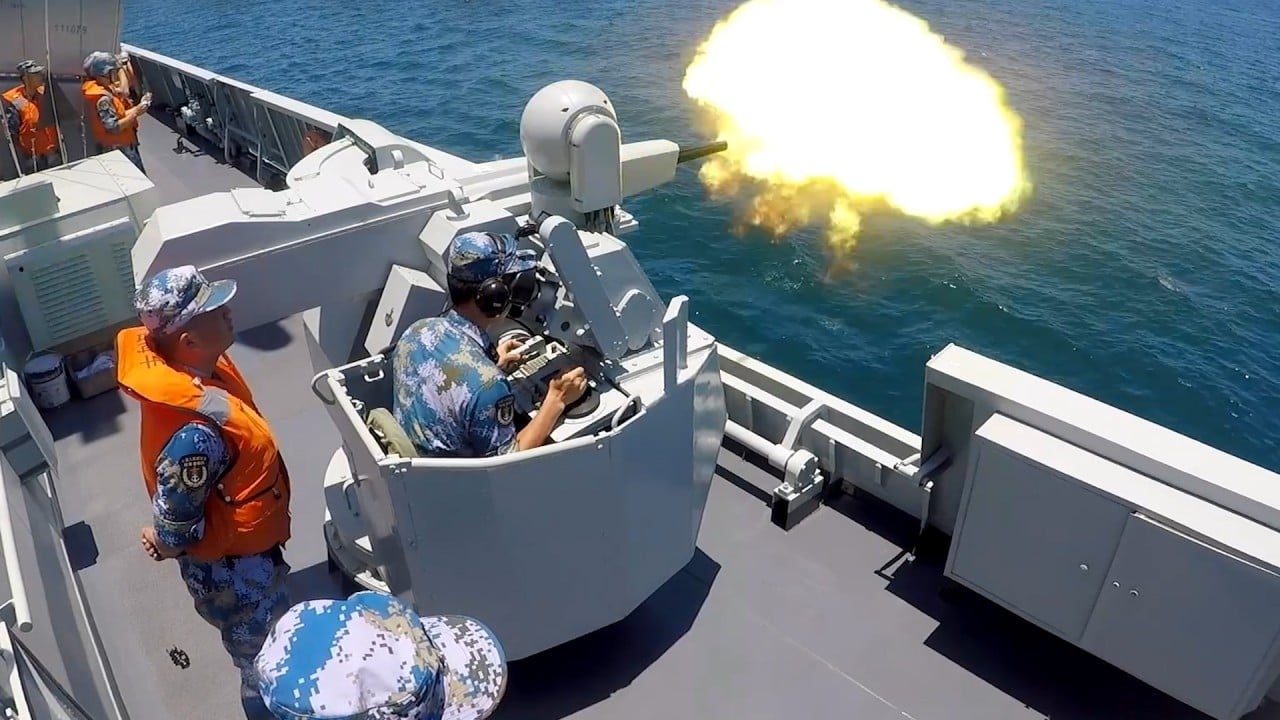
China’s navy goes back to work on big ambitions but long-term gaps remain
- The coronavirus pandemic disrupted operations but military’s major challenge is to train enough personnel to operate its expanding fleet
- China also needs to keep an eye on quality control as it ramps up warship production, observer says
But military watchers and insiders said that even without the coronavirus disruptions, China still had a long way to go to train the personnel it needed to realise its ambitions.

01:51
First made-in-China aircraft carrier, the Shandong, enters service
Signs of the navy’s aggressive push were apparent late last year when an aerial photo of a Shanghai shipyard surfaced on social media.
The photo showed 12 warships under construction at the dockyard at the same time – the country’s third aircraft carrier, nine advanced destroyers, an amphibious landing dock and a missile test tracking ship.
The navy source, who requested anonymity because of the sensitivity of military information, said that since 2015 the Chinese navy had bought up large amounts of China’s excess special steel, which is used to build commercial and military ships. A decline in the global shipping industry led to a drop in the commodity’s price as companies issued fewer contracts to build new ships.
The insider also said the Beijing leadership hoped to offset the economic effect of a downturn in commercial shipbuilding by pushing resources towards building military vessels.

03:56
Chinese navy video shows nuclear sub launching JL-2 ballistic missiles during drill
The construction in Shanghai is part of China’s plan to have at least four aircraft carrier strike groups – compared with the US’ 11 – by 2035, as it moves to fulfil its global naval ambitions and defend its growing overseas interests. China’s first Type 075 amphibious assault ship also began its sea trial in August, another step towards commissioning.
China’s military fleet has already grown dramatically over the last decade and a half.
In 2005, China had a fleet of 216 ships, increasing to 335 in October 2019, according to a US Congressional Research Service report. Most of that expansion came under the watch of admiral Wu Shengli, commander of the People’s Liberation Army Navy between 2006-2017.
The growth is expected to continue, with China’s overall naval “battle force” expected to reach 400 ships and submarines by 2030, which would be more than the planned 355 ships and submarines in the US Navy, the report said.
Andrei Chang, the editor-in-chief of Canada-based Kanwa Defence Review, said China’s shipbuilding industry was more robust than its American counterpart. But he said the PLA needed to keep a close eye on quality control as it sped up the production process.
Chang said the most challenging issue for the military would be crew training and developing an efficient command system to coordinate so many sophisticated surface platforms.
“Building an aircraft carrier may just need a few years, but it will take more than 10 years to train and coordinate thousands of sailors working on the platform,” he said.

01:15
The Liaoning, China’s first aircraft carrier
China started training carrier crew members in the late 1980s when late navy commander admiral Liu Huaqing proposed his aircraft carrier plan to Beijing. But before the commissioning of China’s first carrier, the Liaoning in 2012, progress was slow because of a lack of experience.
Li Jie, a Beijing-based naval expert, said the Liaoning crew in turn trained personnel for the Shandong, the first aircraft carrier built in China.
“Three or four people are working in the same position on the Liaoning ship because learning how to operate an aircraft carrier and coordinate with other accompanying ships is still a new thing to the Chinese military,” Li said.
Another issue is pilot training, with the PLA still struggling to train enough capable young flyers to take-off from the ski-jump ramps on the Liaoning and Shandong.
Learning how to take off and land on a flight deck of less than 300 metres (980 feet) takes time. The navy has been teaching its own pilots since 2017 – rather than recruiting them from the air force.
Furthermore, the upcoming Type 002 carrier will have the world's most advanced electromagnetic launch system, another area that demands further training.
This training is crucial not only from an operational perspective but also a leadership view, with most aircraft carriers elsewhere commanded by former pilots.

01:25
Hong Kong-based warship joins drill in South China Sea
Zhou Chenming, a researcher from the Yuan Wang, a Beijing-based military science and technology institute, said China still had a lot to learn about operating such vessels.
“The navy has only 300,000 personnel, including thousands of the newly established marines transferred from the ground forces, who still need to learn how to become real marine soldiers or sailors,” Zhou said.
“There is still a long way to go for the navy to learn how to steer the helm of so many warships and operate them smoothly in the coming years.”
A Beijing-based military source said the massive lockdown and the limits on travel caused by Covid-19 had also affected the PLA’s recruitment work and crew training.
To prevent further infection, all crew members are supposed to spend two weeks in quarantine and then one week under observation on the ship before heading off on new missions. Anyone returning from patrol and drill missions needs to spend another two weeks in quarantine, according to the source.
“That is why the PLA fleets so far do not have any infection cases on board, unlike their American peers,” the source said.
“But all those measures mean fewer crew members can be deployed, forcing the commanders to recall veterans as reinforcement.”

